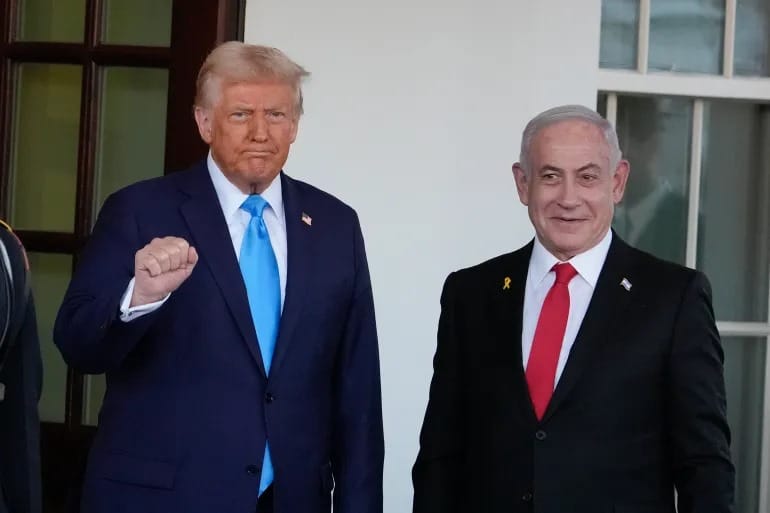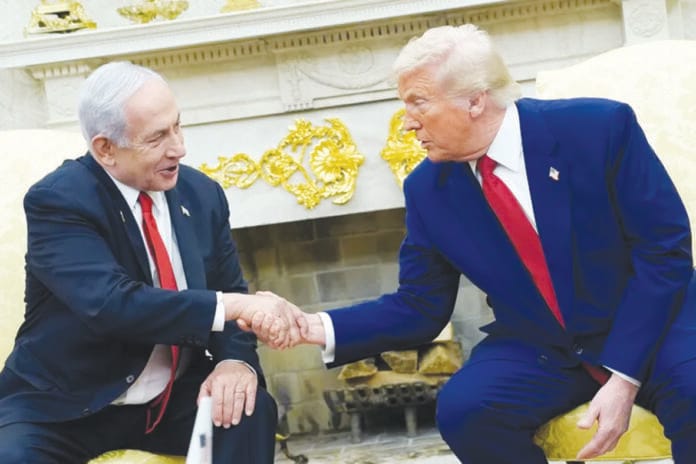
Trump and Netanyahu meet for second time to discuss ceasefire in Gaza

Diplomatic Developments
- On Tuesday night, July 8, 2025, President Trump and Prime Minister Netanyahu met for the second time in a 24-hour period. The meeting lasted just over an hour at the White House without
The presence of the media - This was the third time Netanyahu has visited the United States since Trump started his second term on
January 20, 2025, and followed a lengthy dinner discussion on Monday and bilateral meetings with the U.S.
Here is the revised, plagiarism-free version of the paragraph with the link removed and reworded for
originality:–
Officials, including Speaker Mike Johnson and Vice President Vance, have been involved in the ongoing
discussions. Trump’s Middle East envoy, Steve Witkoff, revealed that the parties involved have made
substantial progress, whittling down their disagreements from four key issues to just one. He voiced strong
confidence that a 60-day ceasefire could be secured before the week is out.
1. Third Meeting This Year
President Trump and Prime Minister Netanyahu have now met three times in 2025 to discuss a Gaza ceasefire. Their most recent session took place on July 8, lasting approximately 90 minutes at the White House, with no public disclosure of the full agenda. Post (+15), Reuters (+15), and Axios (+15).
2. Ceasefire + Hostage Proposal
- A U.S.-backed plan calls for a 60-day ceasefire, Israeli troop withdrawal, and phased hostage releases—about 10 live and 9 deceased hostages first, with a total of ~50 expected, according to Reuters.
- Trump’s envoy Steve Witkoff said only one sticking point remains—the extent of IDF redeployment—and the rest has been agreed upon, with expectations for a deal “by the end of this week.” Axios+1, Al Jazeera+1.
3. Disagreements on troop withdrawal
- Hamas demands the IDF withdraw to its pre-March lines. Israel wants control of Rafah, citing security concerns, according to Axios.
- Netanyahu, the text needs to be more explicit. The need to finish the mission: “Release our hostages, and eliminate Hamas’s military and governing capabilities.” Reuters + 2, Al Jazeera + 2, and CBS News + 2.
4. Broader diplomatic push
- A Qatari delegation has been heavily involved in facilitating the negotiations, meeting U.S. officials before Netanyahu’s arrival. The Guardian + 3, Axios + 3, Reuters + 3.
- Trump is also scheduled to meet Qatar’s prime minister to support the diplomatic effort. Jerusalem Post (+6), Reuters (+6), and YouTube (+6).
📌 Why This Matters
- Humanitarian urgency: Gaza, beset by heavy bombardment and displacement, faces severe shortages of food, medication, and shelter. A ceasefire would bring undue relief, CBS News.
- Hostages: Roughly 50 Israeli hostages remain, with about 20 believed alive. Their release is central to garnering domestic backing in Israel. en.wikipedia.org+4CBS News+4 The Times of Israel +4.
- Political stakes for Netanyahu: His coalition is fragile—especially with far-right voices skeptical of any ceasefire. Settling the issue before the Knesset recess on July 27 is seen as crucial, according to apnews.com. The Times of Israel +1.
- U.S.–Israel friction: While Trump is supportive, Washington is visibly frustrated with Israeli military actions—particularly the church strike in Gaza—and is pushing for urgency in negotiations.

🔍 What’s Next?
| Event | Timing |
|---|---|
| Completion of the final negotiation on IDF withdrawal lines | By end of this week |
| Finalizing formal ceasefire/hostage deal | Likely in the coming days |
| Implementation of truce via Qatari/Egyptian/CNN mediation | Finalising formal ceasefire/hostage deal |
The upcoming week looks pivotal—Trump’s team remains optimistic that breakthroughs will materialize soon.
This excerpt highlights a key conclusion from the summit: it emphasizes that the conflict is not primarily about destroying Hamas but about redefining Palestine. It underscores the message that the United States and Israel view power as a process—focused on strategic interests—while peace is used more as a diplomatic facade. Unfortunately, the pain, dignity, and future of the people involved are portrayed as secondary concerns within this strategic framework.
Would you like a more detailed summary or analysis of this excerpt?
















